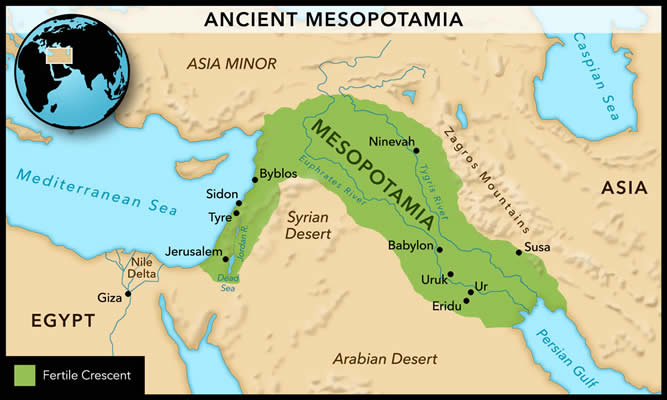

The Pack contains associated resources for the learning experience, typically in the form of articles and videos. There is a teacher Pack (with only teacher information) and a student Pack (which contains only student information). As a teacher, you can toggle between both to see everything.
Here are the teacher pack items for Mesopotamia: Geography and Environment:


Overview In this experience, students use maps and readings to become acquainted with the geography of Mesopotamia and the factors that made it a fruitful home for early civilization. Then they explore the climate, topography, and flood patterns of the region. Finally, they connect Mesopotamia’s water issues to modern history and create a poster or brochure. Objectives
It’s 2400 B.C.E. and you’re in what will someday be called Iraq. Around you, amazing things are happening. Cities are growing. People are inventing not only tools, but also entire fields of study, like science and literature. Why is it happening here and now? In this experience, you will learn about the factors that prompted the rise of the Earth’s first civilization.
Objectives

Look at the map of Mesopotamia, and notice its features. Locate Mesopotamia’s bodies of water and its relation to other areas. Think about why that area is shown in green.
Based on what you see on the map, why do you think Mesopotamia was well suited for the growth of an early civilization?
